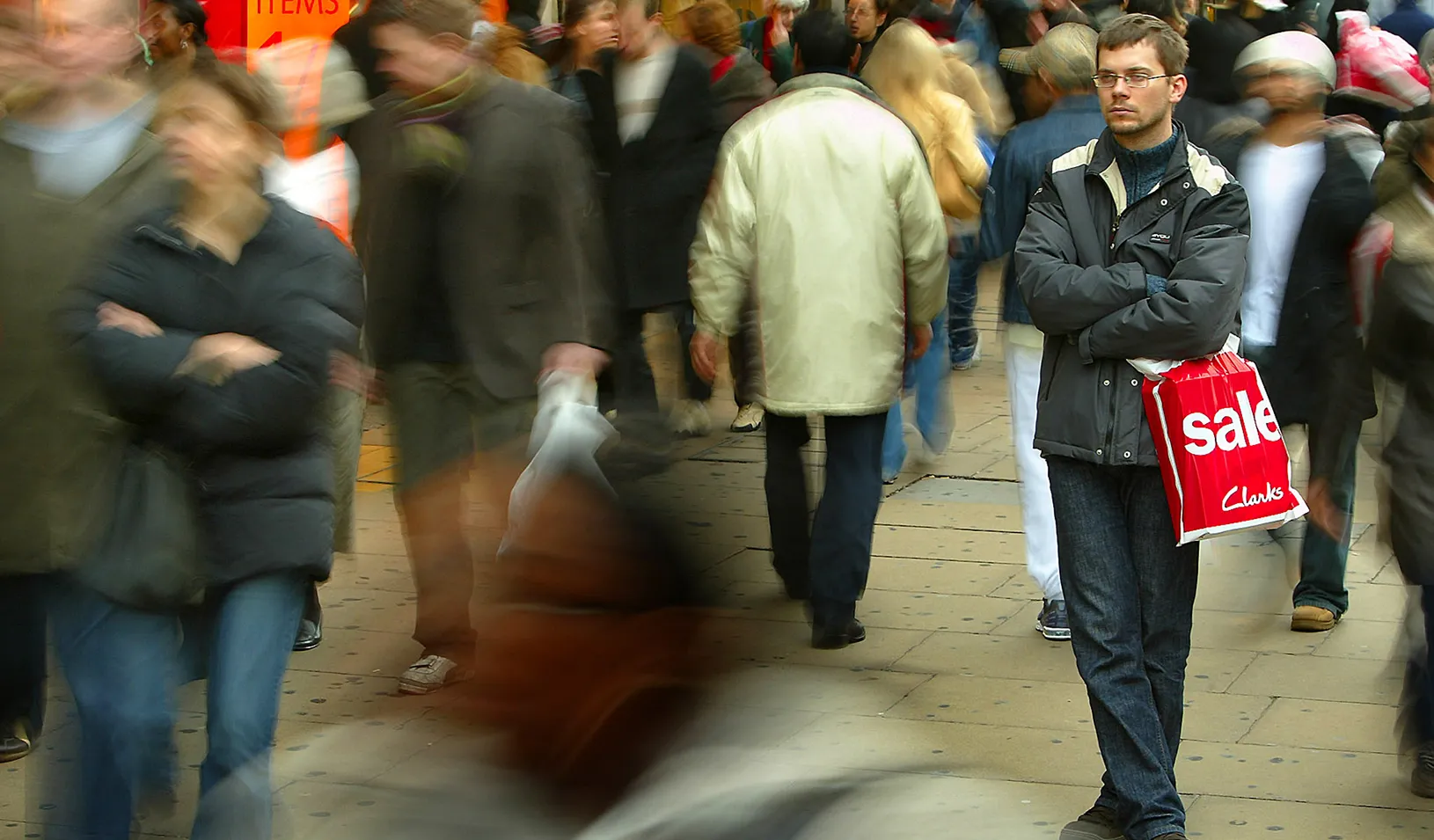Baba Shiv: How Loneliness Affects Consumer Behavior
People who are lonely prefer products outside the mainstream, but only in private.
December 15, 2011

Marketers seem to underestimate the prevalence of lonely consumers. | Reuters/Peter Macdiarmid
As we embark on another holiday season, we’re once again deluged by images of groups of happy people socializing. But a large number of us will be facing the biggest shopping period of the year either alone or feeling lonely — an important fact largely overlooked by both consumers and the people who market to them, says Baba Shiv, Sanwa Bank, Limited, Professor of Marketing at Stanford GSB.
Shiv became interested in studying loneliness, or the sense of being socially isolated, when he heard a statistic that stunned him: 25% of people today say they are lonely, a percentage that’s higher than in years past. “That’s so counterintuitive,” he says. “Because of social media, you’d think people would be saying they’re less lonely than before the technology existed.”
As someone who studies consumer behavior, Shiv naturally turned to the question of how loneliness affects buying decisions. In a recent study, which he conducted with colleagues from the business schools of the University of Iowa and the University of British Columbia, the researchers looked at what sort of movie lonely people would choose to rent from Netflix. They showed participants a picture of a DVD case along with a description of the movie and a rating, supposedly the average of past viewers’ reviews. One randomly selected group saw information for a movie with a Netflix rating of 2.5 stars (or slightly below the midpoint on the site’s 5-star scale). The other group saw information about exactly the same movie, but were told that its rating was 3.5 stars, a tad higher than the midpoint. After evaluating how much they would like the film and how likely they were to rent it, all the participants completed a standard loneliness questionnaire.
Most people, not surprisingly, said they would like to see the higher-rated movie. But intriguingly, just the opposite was true for those who scored on the lonely end of the loneliness scale: lonely participants actually favored the 2.5-star film.
Why would that be? The Netflix study was inconclusive, Shiv says, because 2.5 stars can mean quite different things. It’s possible that a movie earned that average because it’s loved by a significant minority, in the way of a cult film; but it could simply be a mediocre movie, rated below average by just about everyone. Shiv and his colleagues ran more experiments and found results that matched the first interpretation. “People who are not lonely prefer to go with the majority, whereas people who are lonely prefer to go with the minority,” he says.
For example, in one study, students had to choose a piece of artwork after being told either that 80% of past buyers liked this artist’s work or that 20% of buyers liked it. The lonely students (and only the lonely) went along with the 20%.
However, there was an important twist to this result: It held up only when participants were shopping for art to display in their own room. When they were told they’d be buying art for a public space, they went along with the majority preference, just like the non-lonely students. Lonely people, Shiv believes, are often comfortable being lonely when they’re alone, and choose products that fit their identity as part of a minority. “But, in a social setting, they become so anxious about other people that they go overboard in going with the consensus.”
That private-public tension, says Shiv, creates the possibility of a troubling mismatch between buying decisions and actual preferences. “If a lonely person makes a purchase in public, but the consumption happens in private, that can result in huge dissatisfaction,” he says.
Despite what the loneliness questionnaires show about people’s private feelings, few are willing to publicly admit to their loneliness. This may be one reason marketers seem to underestimate the prevalence of the lonely consumer. TV commercials, for example, typically show people enjoying a product while amongst family or friends. “That may not work for the lonely consumer,” Shiv says. Not only might lonely people have a harder time relating to these social images, but also they may actually find such scenes off-putting, in much the same way they stayed away from majority-endorsed DVDs or artwork in Shiv’s studies.
So what’s a marketer to do? “If a quarter of the target market is lonely, it might make sense to promote more heavily online,” Shiv suggests. For one thing, lonely people might shy away from bustling stores and movie theaters, and feel more comfortable in the privacy of their own homes, whether it be watching videos on Hulu.com or shopping on Amazon.
Reaching lonely consumers through online channels offers another advantage, Shiv says: the ability to show targeted offerings. Through traditional media, it’s not nearly as easy to target the lonely consumer as it is to reach a narrower but more visible swath of the population, such as Hispanics or Denver-area parents. Online marketers, on the other hand, can customize their message based on browsing patterns and purchase histories. Personalized messages, such as “People like you bought this product” — something the Amazons and Netflixes are already doing across the board, will work especially well for lonely consumers, Shiv believes.
Consumers, for their part, can take comfort in knowing that though they may be lonely, they are far from alone. “It’s okay to be lonely,” Shiv says, “and it’s not something to be ashamed about.”
For media inquiries, visit the Newsroom.
Explore More

What Makes Some Words More Memorable Than Others?

To Make Influencers Seem More Authentic, Just Add #Friends



